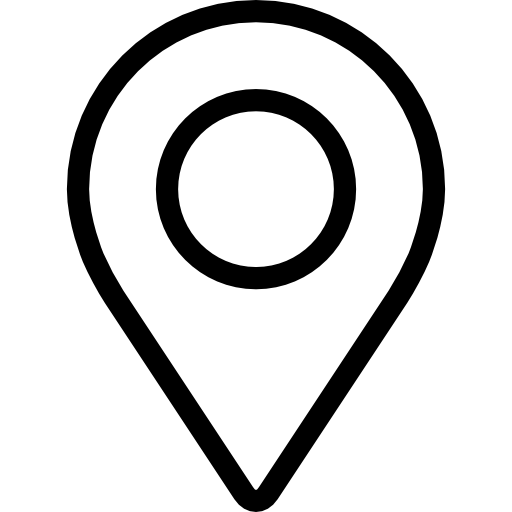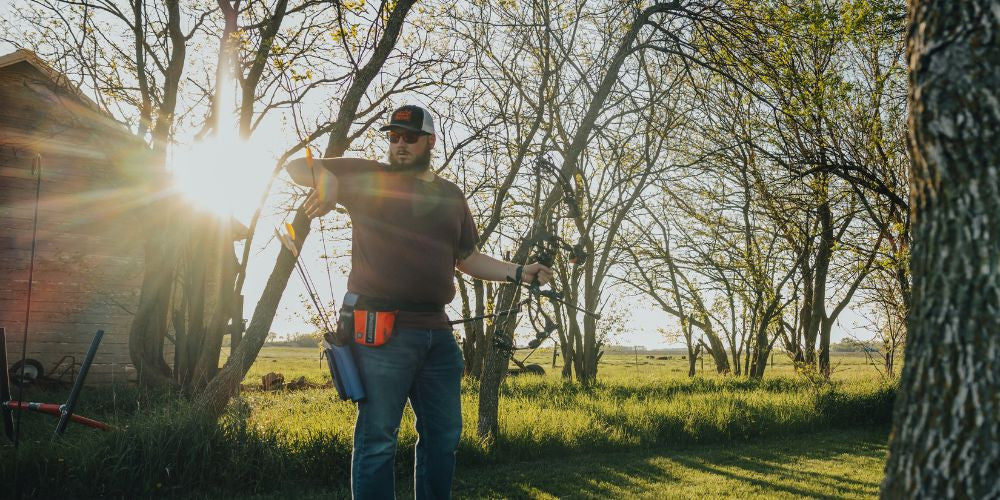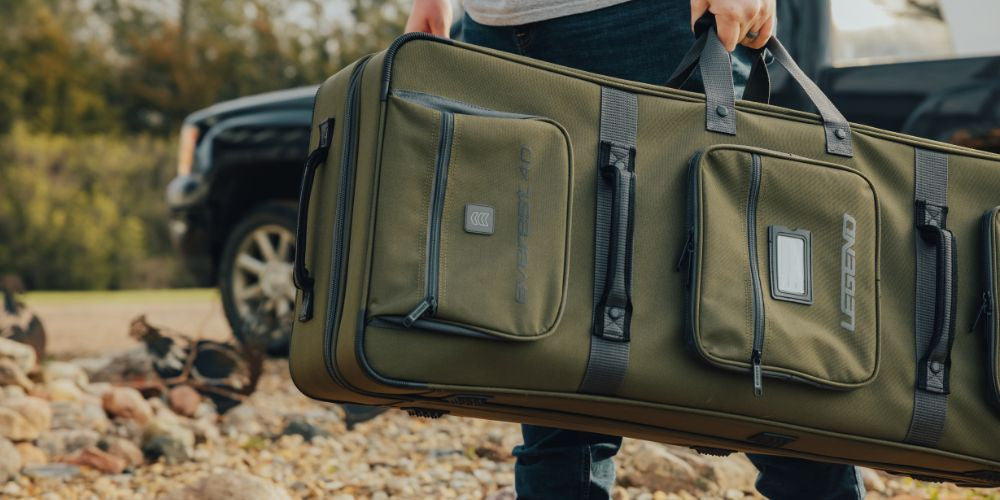Hunting season is an exciting time for many outdoor enthusiasts. It's a time to get outside, enjoy nature, and hopefully, bring home some game. However, one of the most challenging aspects of hunting is finding the right spots to hunt. Fortunately, trail cameras can help hunters identify game trails, feeding areas, and other important information to help enhance their hunting season. In this article, we will explore 5 ways to enhance your hunting season - trail camera edition.
Why Trail Cameras Are Handy Tools For The Hunting Season

Trail cameras have become an essential tool for hunters in recent years. These cameras provide valuable information about the movement patterns of game animals and help hunters to be more strategic and successful in their hunting pursuits. Here are some of the key benefits of using trail cameras as a deer hunter:
Identify patterns of animal behavior
Trail cameras allow hunters to monitor the movement patterns of game animals, such as deer, elk, and turkey. By capturing images of animals at various times of day, hunters can identify patterns of activity, including feeding, bedding, and travel patterns. This information can be used to determine the best times and locations for hunting.
Plan hunting strategies
By using trail cameras to monitor the behavior of game animals, hunters can plan more effective hunting strategies. For example, if a hunter notices that deer are feeding in a particular area at a certain time of day, they can plan to set up a stand in that area and wait for the deer to come by.
Improve scouting efforts
Trail cameras can also help hunters to improve their scouting efforts. Instead of relying solely on physical scouting, which can be time-consuming and ineffective, hunters can use trail cameras to cover more ground and get a better understanding of the terrain and animal movement in a particular area.
Increase success rates
Using trail cameras can significantly increase a hunter's success rate. By monitoring the behavior of game animals, hunters can identify the best locations and times for hunting and adjust their hunting strategy accordingly. This can lead to more successful hunts and a higher chance of bagging a trophy animal.
Enhance safety
Trail cameras can also enhance safety for hunters. By monitoring the activity of game animals in a particular area, hunters can avoid areas where animals are likely to be active and reduce the risk of a dangerous encounter.
Tips To Enhance Your Hunting Season Using Trail Cameras
Below are useful tips to bear in mind to boost your trail camera game during the next hunting season:
Choose the Right Location

When using trail cams to enhance your hunting season, choosing the right camera location is crucial. Your camera placement can greatly impact the success of your hunting season, so it is essential to put some thought into the process.
Here are some tips for choosing the right location for your trail camera.
-
Consider the behavior patterns of the animals you are interested in hunting
Before you place cameras, think about the behavior patterns of the animals you want to hunt. Look for areas where they are likely to travel, feed, and bed down. For example, if you are interested in hunting deer, look for areas with plenty of cover, such as thickets or wooded areas, and near a water source, such as a pond or stream. Deer are also known to travel along trails and paths, so you may want to place your camera near one of these areas.
-
Look for signs of animal activity
Another way to choose the right location for your trail camera is to look for signs of animal activity. Look for tracks, droppings, and rubs, which can indicate where animals are spending their time. You can also look for areas where animals are feeding, such as patches of grass or browse. Placing your camera near these areas can increase your chances of capturing images of the animals you want to hunt.
-
Consider the direction of the sun
When choosing a location for your trail camera, consider the direction of the sun. Placing your camera facing directly into the sun can result in low-quality images, as the bright sunlight can wash out the details of the animals in the image. Instead, try to place your camera so that the sun is behind it or to the side of it, as this can result in higher-quality images.
-
Choose the right height and angle
The height and angle of your trail camera can also impact the quality of the images you capture. Make sure to place your camera at a height and angle that provides a clear view of the area you're interested in monitoring. Placing the camera too high or too low can result in images that are not helpful or difficult to see.
-
Consider the environment
Finally, when choosing a location for your trail camera, consider the environment. Make sure that the camera is protected from the elements, such as rain, snow, and wind. You may also want to consider placing the camera in a location that is not easily accessible to people to reduce the risk of theft or damage.
Monitor Your Cameras Regularly

Monitoring your trail cameras regularly is another critical factor in enhancing your hunting season. Checking cameras regularly can help you identify patterns in animal behavior, track the movements of your target animals, and adjust your hunting strategy accordingly.
Here are some tips for monitoring your trail cameras regularly:
-
Set a schedule
Set a regular schedule for checking your trail cameras. The frequency of your checks will depend on the activity in the area, the type of animals you're interested in, and the battery life of your camera. In general, it's a good idea to check your cameras at least once a week during peak hunting season.
-
Check the batteries and memory card

Before checking your camera, make sure to check the batteries and sd card. You don't want to arrive at your camera only to find that it has run out of batteries or that the sd card is full.
-
Collect and analyze data
When checking your cameras, take note of the images you've captured. Look for patterns in animal behavior, such as feeding or bedding areas, travel corridors, and patterns of movement. This information can help you adjust your hunting strategy and improve your chances of going home with a big buck.
-
Move the camera if necessary
If you're not capturing the images you need from a particular location, consider moving the camera to a new location. Look for areas with more animal activity, such as areas with fresh tracks or signs of feeding.
Check Your Camera's Settings

Checking your trail camera's settings is a critical step in ensuring that it is functioning properly and capturing the images you need to enhance your hunting season. Here are some key settings to check:
-
Image quality and resolution
Make sure your camera is set to capture high-quality images at a resolution that is suitable for your needs. Higher-resolution images will provide more detail and clarity but will also take up more space on your memory card and use up more battery life.
-
Trigger speed
The trigger speed of your camera determines how quickly it will capture an image once it detects movement. A faster trigger speed is better, as it will increase your chances of capturing an image of a moving animal. Some cameras also have adjustable motion detection and sensitivity settings to help reduce false triggers.
-
Time-lapse mode
Many trail cameras offer a time-lapse mode, which captures images at regular intervals regardless of whether there is movement in front of the camera. This can be useful for monitoring activity in a specific area over a longer period of time, such as a feeding or bedding area of mature bucks.
-
Nighttime settings

If you plan to use your camera for nighttime surveillance, make sure to check the camera's settings for nighttime photography, as this is quite different from the settings used during daylight hours. Many cameras offer infrared flash technology, which provides clear images without spooking game animals with a bright flash.
-
Memory card capacity
Check the memory card capacity of your camera and make sure it is sufficient for your needs. If you plan to leave your camera out for an extended period, you may need larger memory sd cards to ensure you don't miss any valuable images.
-
Battery life
Make sure your camera has sufficient battery life to last for the duration of your intended monitoring period. Many cameras offer a battery life indicator, so you can monitor the battery level and change the batteries as needed.
Use Multiple Cameras

Using a few cameras can be a highly effective strategy for enhancing your hunting season. Here are some more detailed explanations of the benefits of using multiple cameras:
-
Cover more areas:
One of the primary advantages of using multiple scouting cameras is that you can cover a larger area. Depending on the size of the area you're hunting, a single camera may not be enough to capture all the movement and behavior of game animals in the entire area. By using multiple cameras, you can cover a wider range of territory and get a more comprehensive view of the trophy bucks in the area.
-
Monitor specific areas:
In addition to covering a larger area, multiple cameras can be placed in specific locations to gather information about the behavior of game animals in those areas. For example, if you know that a particular area is a feeding ground or a favored spot for bedding down, you can place a camera there to monitor deer activity. By doing so, you can learn about the animals' habits and routines and use that information to develop a more effective deer hunting strategy.
-
Mask human scent:
Another benefit of using multiple trail cams is that it can reduce your presence in the field. The less time you spend in the area, the less likely it is that game animals will detect your scent or hear your movements. By using multiple cameras, you can gather information about the animals without disturbing them or altering their behavior.
-
Improve camera coverage:
Using multiple cameras can also provide better camera coverage of the area you're hunting. By placing cameras in different locations, you can capture images of game animals from different angles and perspectives. This can be particularly useful when trying to identify mature bucks or individual animals, as you may be able to get a better view of distinctive markings or other features that can help you differentiate one animal from another.
-
Backup cameras:

Finally, using multiple cameras can provide a backup in case one camera fails or is stolen. This is especially important if you're using expensive or high-quality cameras that are particularly vulnerable to theft. By placing multiple cameras in the area, you can ensure that you don't miss any valuable information about the behavior of game animals, even if one camera is damaged or stolen.
Pay Attention to Weather Conditions
When it comes to using trail cams for hunting, it's important to pay attention to the weather. Here are some reasons why:
-
Weather affects animal behavior:
Weather conditions such as temperature, wind, and precipitation can all affect animal behavior. For example, animals may move to different areas in search of food or shelter during extreme temperatures or high winds. They may also alter deer movement patterns during periods of rain or snow. By understanding how weather affects animal behavior, you can better predict when and where animals are likely to be active, which can help you optimize the placement and settings of your trail cameras.
-
Weather affects camera performance:

Weather conditions can also affect the performance of your trail cams. Extreme temperatures, humidity, and moisture can all cause issues with camera function, such as battery drainage or condensation on the lens. Additionally, harsh weather can make it difficult to access and maintain your cameras. By monitoring the weather and preparing accordingly, you can ensure that your cameras are functioning optimally and capturing the best possible images.
-
Weather affects human presence:

Finally, weather conditions can affect the presence of humans in the field. In unfavorable weather, fewer hunters may be out in the field, which can reduce competition for game animals. Additionally, certain weather conditions, such as high winds or heavy rain, can make it more difficult for animals to detect the presence of humans. By taking advantage of these conditions while hunting, you may be able to get closer to animals or capture better images with your trail cameras.
 cust@legendarchery.com
cust@legendarchery.com 302 503 5767
302 503 5767 Sauk Village IL 60411
Sauk Village IL 60411


